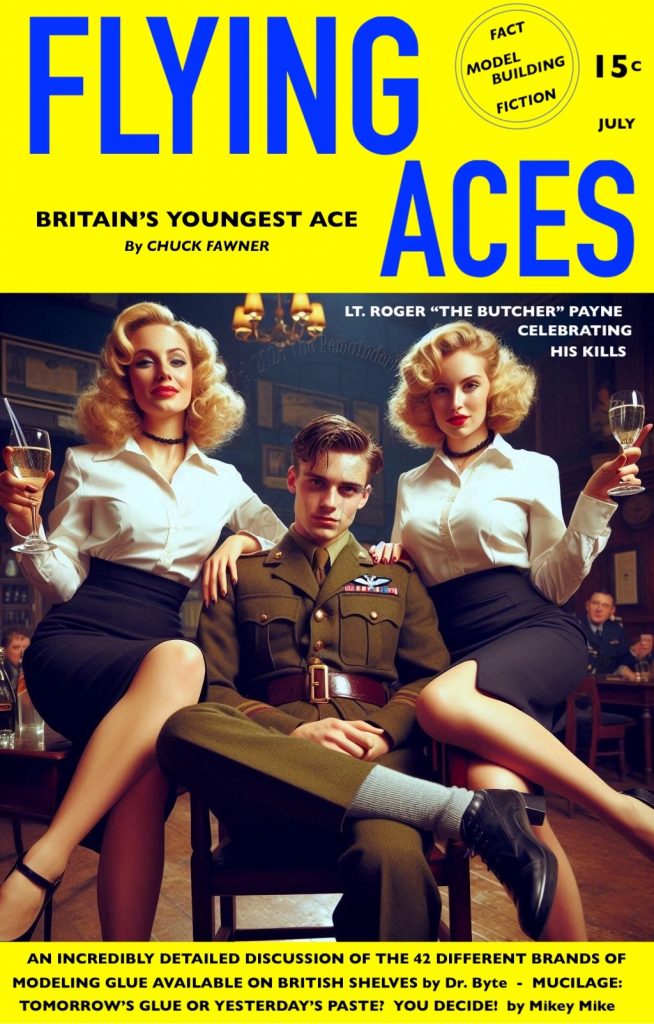
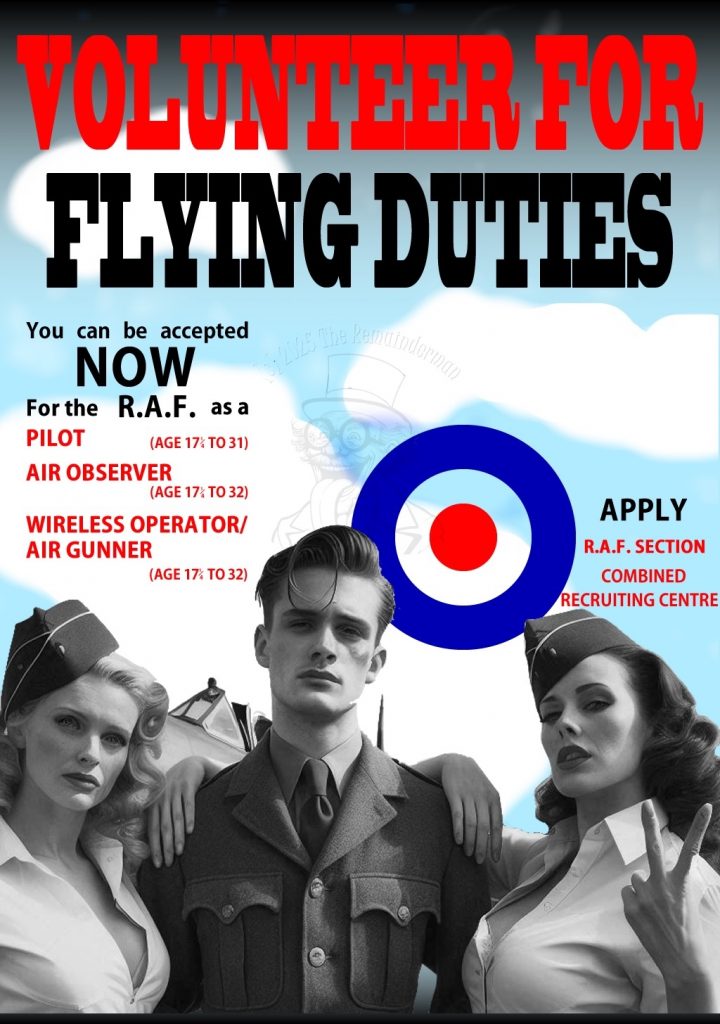
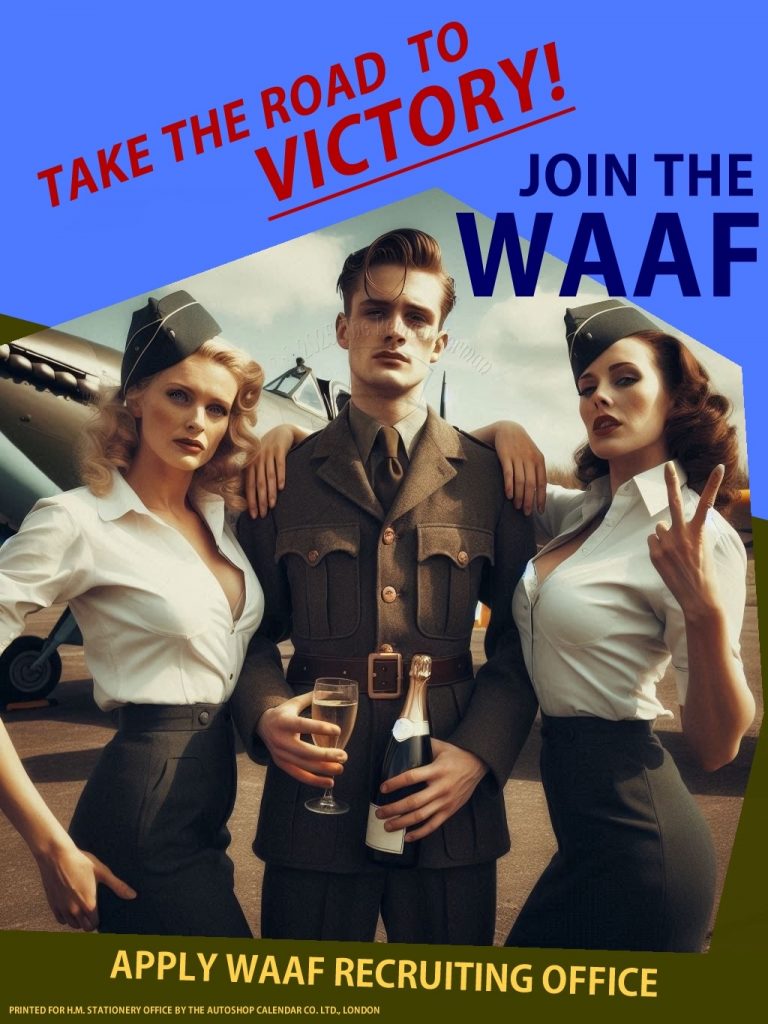
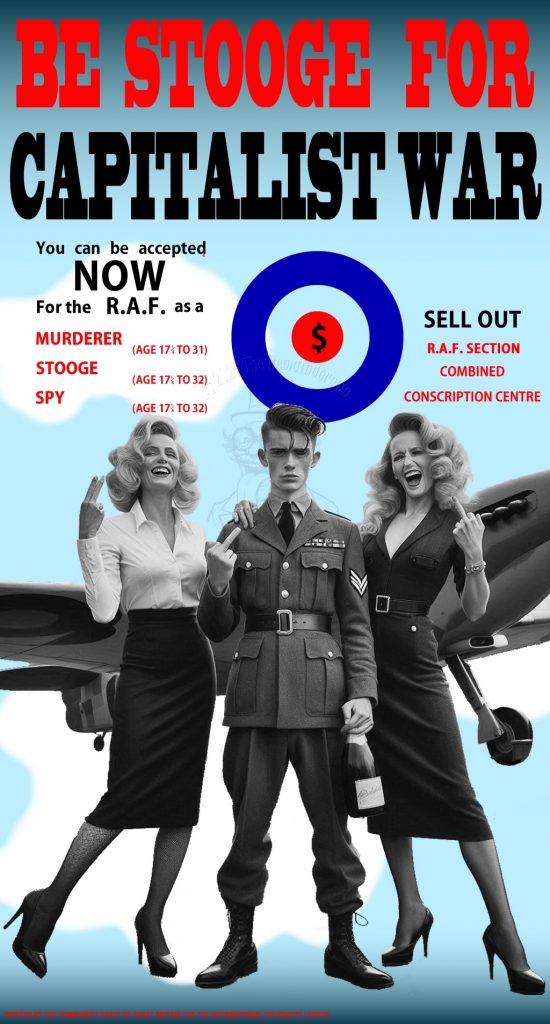
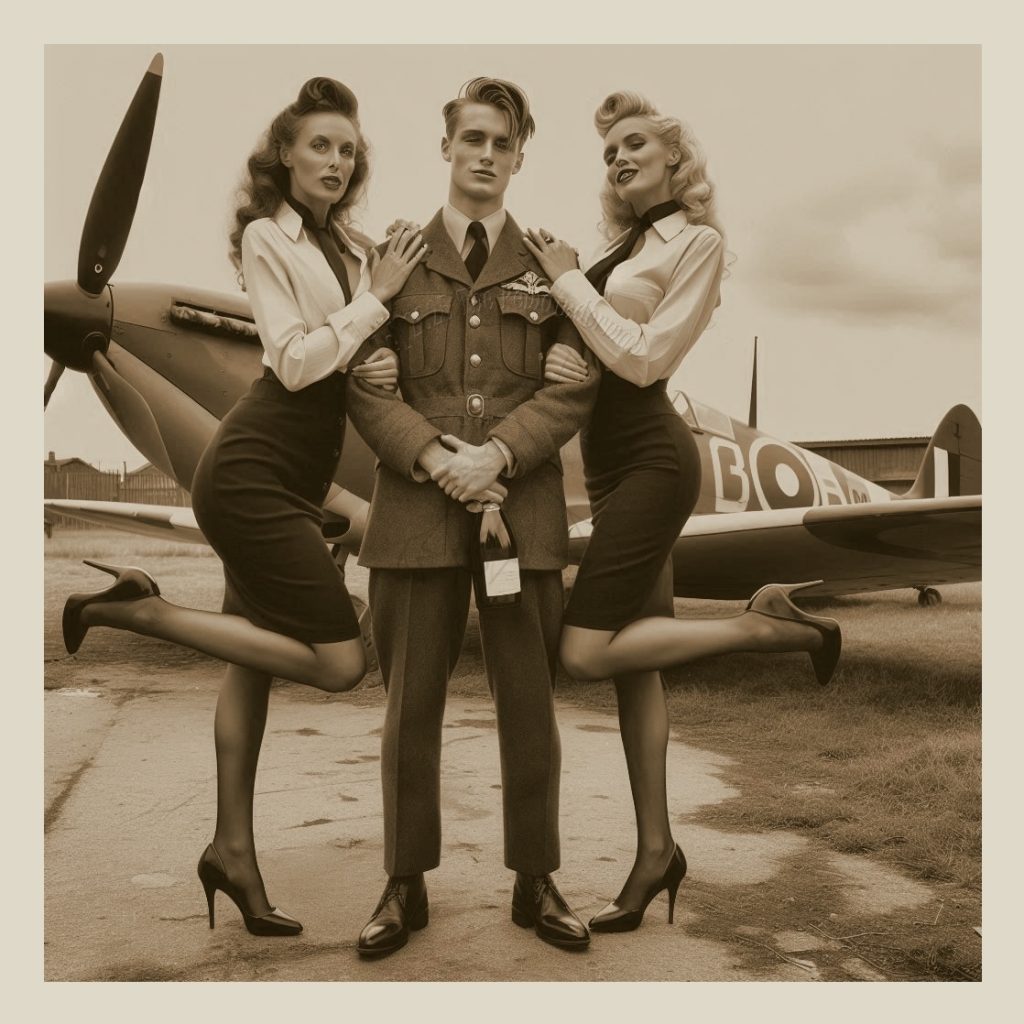
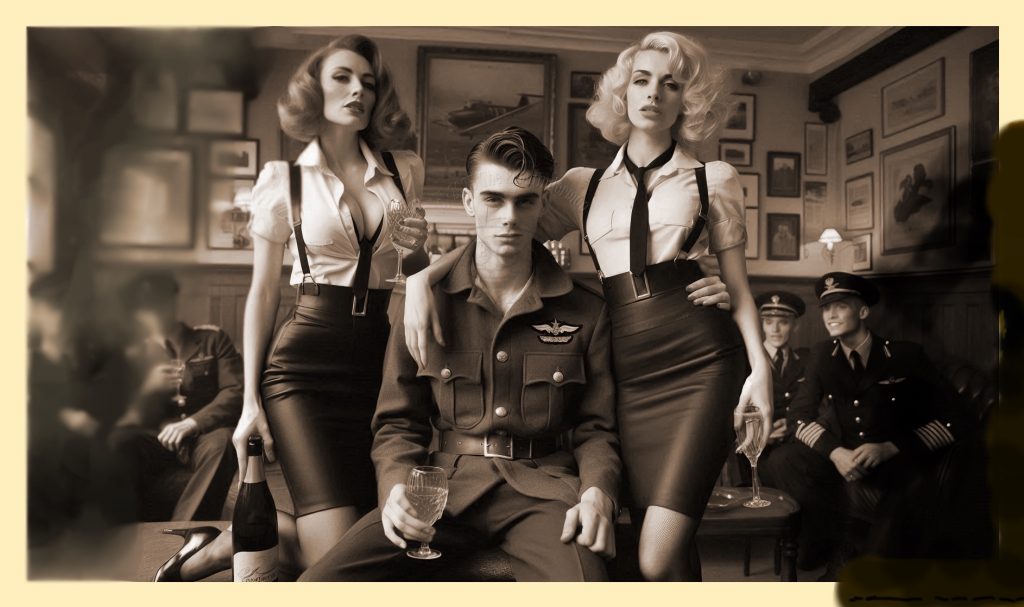
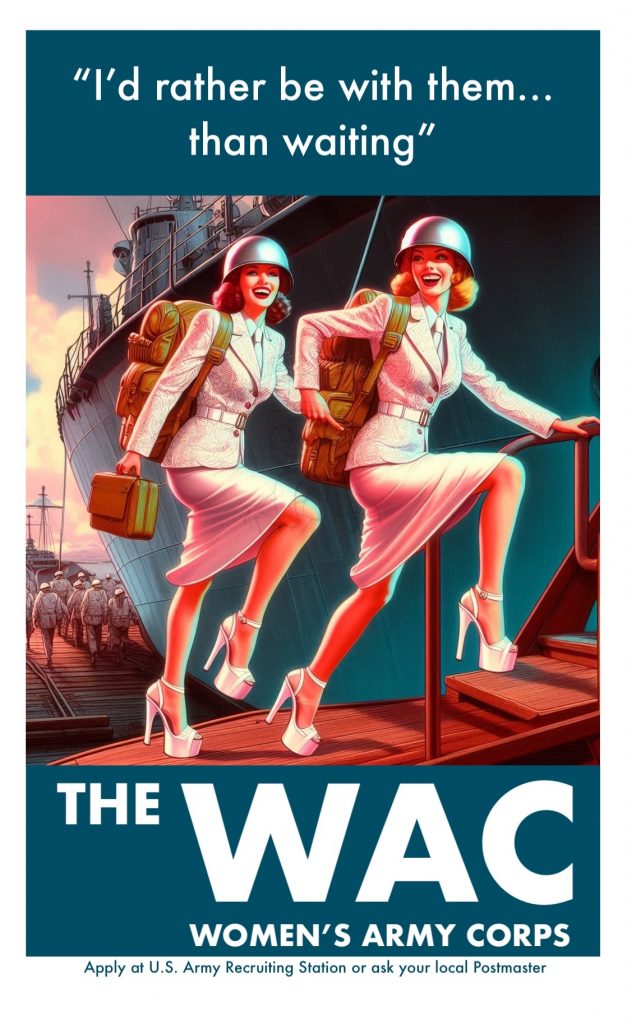
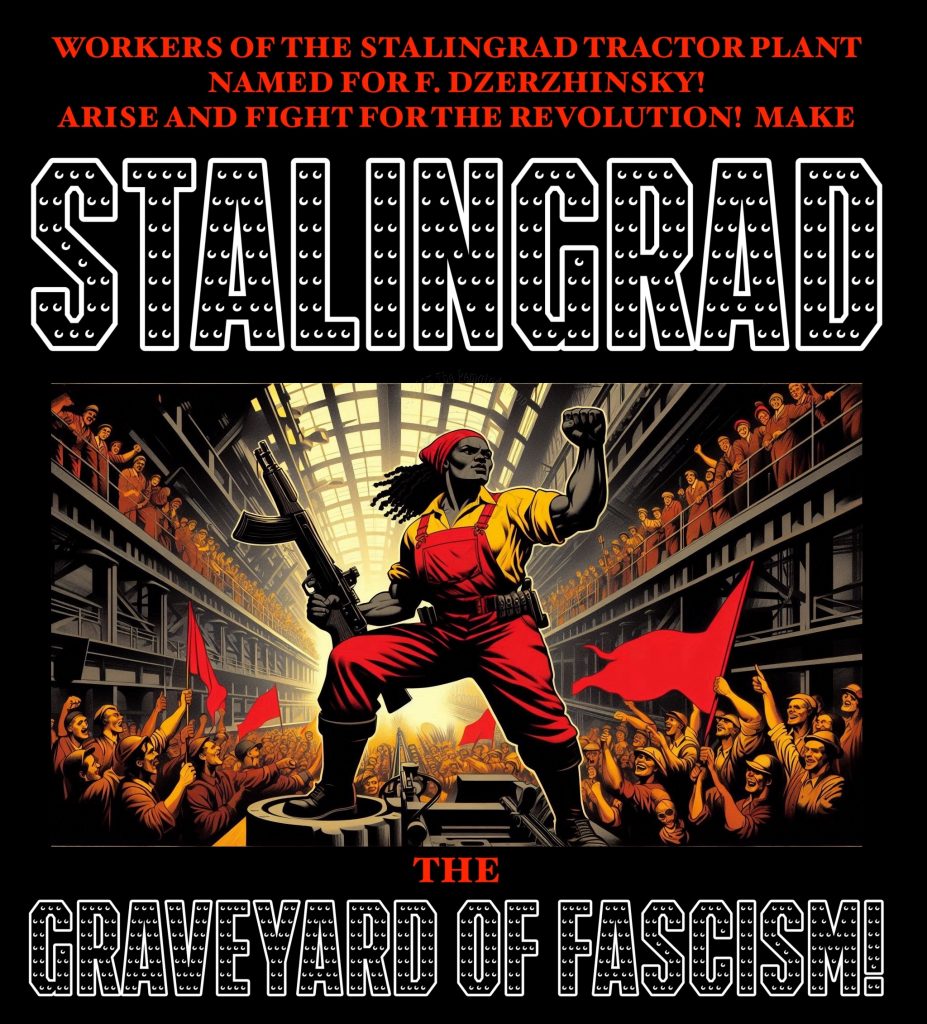
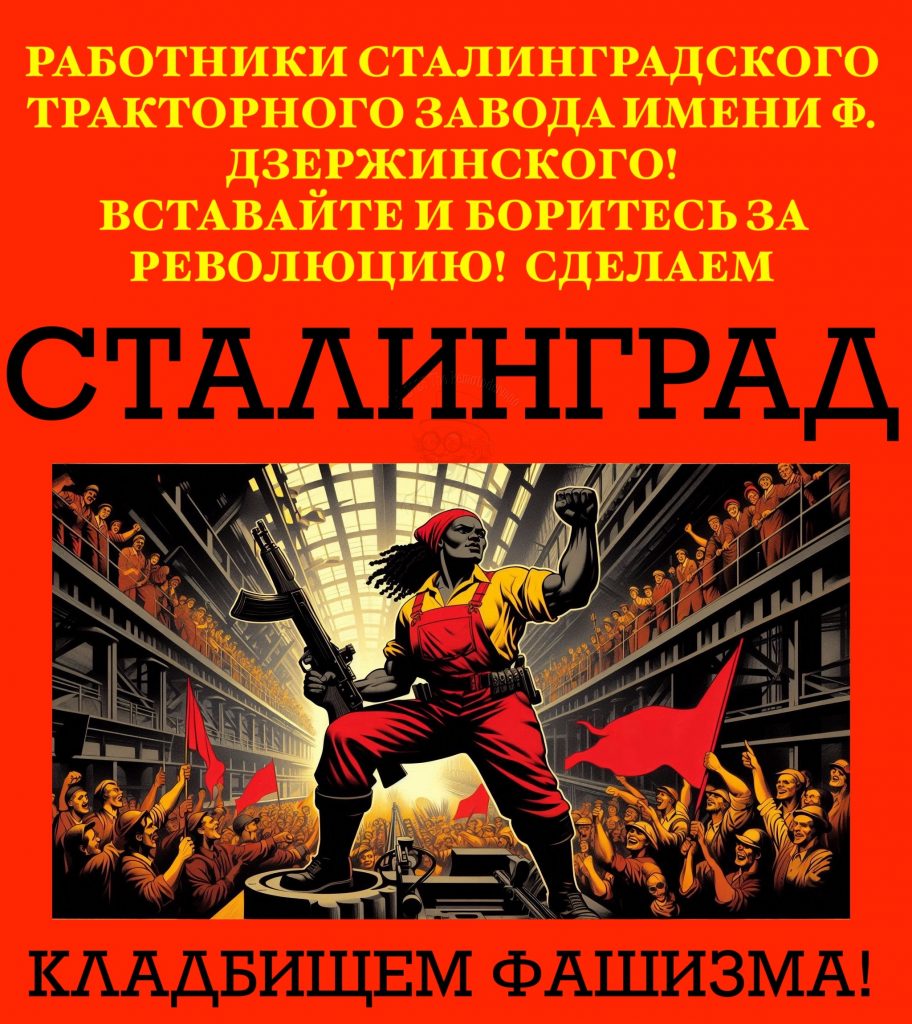
07-04-F Allied Recruitment Messaging
These images fall into two groups: Western Allied and Soviet. The Western images are unrealistic, in my view, only in the extent to which they bring to the surface, themes that were present but heavily downplayed at the time. Between Nazi Germany and Soviet Russia, the 1930s and 1940s were among the most socially disruptive in European history. Both regimes used forced labor, starvation, the cold, concentration camps, and death camps to kill and incarcerate millions, while shuffling ethnic groups and entire nations back and forth like chess pieces to suit their designs. All of the countries involved mobilized their populations for war, and to a greater extent than in previous wars, that included the mass mobilization of women in military, support, and industrial roles they had previously been discouraged from undertaking. The result was families and friends being taken apart while strangers were thrown together. This combined with longer-term trends and the general sense of “living for today” given the uncertainty of any future to change the ways workers were recruited, and the way romantic and sexual relationships formed and disintegrated. Recruiting posters of the time, sometimes subtly but unmistakably, suggested that men could get laid by demonstrating their masculinity through military service; and that women could meet these masculine warriors by joining auxiliary formations that worked in a support role for (in most countries) male warriors. The subtlety of some of these messages was deliberate because it was subversive: public sentiment generally discouraged women, in particular, from departing from historical norms and expectations; and was alarmed by the disruptions of war. But government propagandists used forbidden messaging anyway, often by remaining indirect and vague enough that their methods could be plausibly denied. The Soviet image is unrealistic because even though it represents a loudly-touted message of international harmony and unity in communist ideology, that ideology was at complete odds with the highly nationalistic and ethnic realities of Soviet propaganda and policy. There was a categorical inconsistency between, on the one hand, egalitarian Marxian and other communist messaging that preached the end of nationalism and racism in favor of class-based cooperation; and on the other hand, the extent to which Stalin used appeals to nationalism and patriotism to rally support within the Soviet Union for the war and for his regime; while simultaneously directing genocidal measures against ethnic groups and nations considered disloyal or risky from the Pacific Ocean to the Elbe river. The fact Stalin, himself a Georgian, relied primarily on Russian nationalism, is just another ironic twist. Western and Soviet propaganda were thus similar in their hypocrisy and cynicism.
Literature Section “07-04-F Allied Recruitment Messaging”—Accompanying Images: 1719-1724, 1942E, 1942R, 1944—Published 2025-06-13 to -16—©2025 The Remainderman. This is a work of fiction, not a book of suggestions. It’s filled with fantasies, idiots, and criminals. Don’t believe them or imitate them.
1719 07-04 Flying Aces cover July 1940–Britain’s Youngest Ace—2025-06-13; Rivqah, Roger, and Miryam; magazine cover; compare https://www.airplanesandrockets.com/magazines/flying-aces/images/flying-aces-may-1941-cover.jpg. In reality, virtually every “Flying Aces” cover had an airplane on the cover, not people away from airplanes. However, the image struck me as the kind of image gossip magazines would use in reporting on interesting war-related personalities. I had originally had a mock cover of Collier’s magazine in mind; Colliers had several images of serviceman-and-his-wife during the war although having two women might have been a bit much for general-interest mass-circulation media of the time. In the end I went with Flying Aces because, duh, the title complemented the theme; they did in fact have (fictional and factual) articles about fighter aces; and it was a British magazine.
1720 07-04 Volunteer for Flying Duties—2025-06-14; Miryam, Roger, Rivqah; recruitment poster; compare https://www.alamy.com/british-ww2-royal-air-force-raf-recruitment-poster-volunteer-for-flying-duties-1942-1945-image418221186.html propaganda poster), of which there were a number of variants and of similarly-themed and composed posters, for the composition itself; and for the theme of recruitment posters suggesting that joining up is the best way to get laid, see, e.g., https://www.ebay.com/itm/284032713401.
1721 07-04 Take the Road to Victory—2025-06-14; Miryam, Roger, Rivqah; recruitment poster; compare
https://www.alamyimages.fr/la-seconde-guerre-mondiale-affiche-de-propagande-de-l-information-du-public-2-image351137925.html?imageid=3830CED0-63CD-4E2B-8EA0-0F6E32A3E753&p=639688&pn=1&searchId=577cfcdc58da60b6d23b057045f51060&searchtype=0 (for composition and wording generally). And for the theme of women seeking men: https://uk.pinterest.com/pin/69031806763099077/ and https://www.alamy.com/ww2-propaganda-recruitment-serve-in-the-waaf-with-the-men-who-fly-british-ww2-recruitment-poster-womens-auxiliary-airforce-war-work-occupation-uk-1940s-world-war-ii-image503759123.html, (the latter of which I found when I was preparing this blurb, long after the image was generated, and even has the same pilot from 1720!) Yes, the base image in 1721 is exactly the same base image as that used in 1720 (although processed differently)! Posters directed at women were more subtle in the relationship messaging than those directed at men. Of course, unlike the male counterpart who is encouraged to be tempted by women, proposing women look for husbands in the services might have gone too far towards suggesting women who joined the supporting services were hussies, given the unequal gender expectations of the time, and the great fears of the time in most combatant countries that the social disruption and rapidly changing norms occasioned by the war were undermining conservative values and putting young women at extreme risk. Nonetheless, I went there with this poster, partly because I enjoyed the idea the same image, and even the same “V-for-Victory” slogan, might hold different messages for male and female viewers; and to highlight the differences between expected gender roles, and questioning what the motives for joining up were for men and women of the time. I thought about having Hellinore’s sisters be more upstanding ladies looking for marriage, instead of slags looking for a good time, but challenging instead of endorsing expectations is always more fun; and I was trying to think of ideas to get Miryam, Roger, and Rivqah in images that was not-inconsistent with the project.
1722 07-04 Be Stooge for Capitalist War (CPUK propaganda printed 1941-06-21 and taken down next day)—2025-06-14; Miryam, Roger, Rivqah; propaganda poster. I’m not a real big fan of communism, certainly not of the USSR, and found it repellant that communists in the Western allies were opposed to the war when Stalin was Hitler’s ally in carving up Europe; and when the war aims were more or less justified in terms of defending innocent people getting attacked, plundered, transported, enslaved, and killed by aggressive brutes (although clearly Britain’s desire for a balance of power, and naked French fear of Germany, were also critical), then suddenly did an about-face when Hitler stabbed Stalin in the back and it became a war about propping up Stalin’s regime in the name of global communist unity. Nonetheless, I found the idea irresistible because the complete about-face in attitudes highlights the antithetical and utterly inconsistent perspectives Western communists of the time were able to reconcile in their own minds.
1723 07-04 Skeevey Aunties welcome youngest Ace back to UK soil 1940-06-29—2025-06-14; Miryam, Roger, Rivqah; old private photo. See comments about posters for 1720-1722 regarding the origin of the image. When the AI gave me this image, it didn’t really tie into any of my planned posters; but I was too entertained by it to let it go to waste.
1724 07-04 Ace and his Aunties at the Officer’s Club the next morning 1940-06-30—2025-06-14; Rivqah, Roger, and Miryam; old private photo. See comments about posters for 1720-1722 regarding the origin of the image, and about 1723 regarding the appeal of the image.
1944 07-04 I’d rather be with them… than waiting–The WAC—2025-06-15; Penance & Chastity; motivational poster; compare https://www.alamy.com/id-rather-be-with-them-than-waiting-the-wac-womens-army-corps-american-ww2-female-war-work-poster-1941-1945-image424727714.html. American recruiters and marketing men seemed to be less subtle on the theme of women looking for men than the Brits. Yes, the slogan could be interpreted as having more of a war-priority meaning than I think it did; but we’re getting pretty out of the closet here. I loved this image because of the way it suggests Penny and Chas are half-dressed practically for foreign military-support duty, and half-dressed impractically for a cocktail party, mirroring the mixed message of the poster.
1942E&R 07-04 Workers of the Stalingrad Tractor Plant Named for F. Dzerzhinsky! Arise and Fight for the Revolution! Make Stalingrad the Graveyard of Fascism! (English & Russian)—2025-06-16; Kadidia; motivational poster; Translation (Russian to English): РАБОТНИКИ СТАЛИНГРАДСКОГО ТРАКТОРНОГО ЗАВОДА ИМЕНИ Ф. ДЗЕРЖИНСКОГО! Workers of the Stalingrad Tractor Plant Named for F. Dzerzhinsky!; СДЕЛАЕМ СТАЛИНГРАД КЛАДБИЩЕМ ФАШИЗМА! Make Stalingrad the Graveyard of Fascism!. I love the completely uninspiring wording of the factory name, which is typically Soviet; as is including turgid language like that in a propaganda poster. The factory named was one of three huge factories at the heart of Stalingrad’s industrial district that became a scene of prolonged and vicious fighting. All three factories were destroyed in the battle but rebuilt, 2 of them before the war ended. To my knowledge, the factory workers themselves didn’t drop their hammers and sickles to pick up rifles when they heard the German tanks approaching their factory; but the idea that they might is such a communist, and especially Soviet, trope I wanted to employ it. There were black workers in the USSR, including for example African-Americans disillusioned by America’s apartheid policies and system and attracted by socialism’s race-neutral language (along with white Americans attracted only by other propaganda messages). More’s the pity the USSR didn’t live up to it, despite their willingness to capitalize on America’s failings on race issues. Having a black woman lead a primarily white-male workforce to the barricades would not have been an alien idea to the leftists fighting on the Republican side in the Spanish Civil War three years earlier, and indeed the Anarchist, Syndicalist, and Communist posters portraying strong women and heroic people of color are one of the reasons I expanded the project to include works referencing the Spanish Civil War. But multicultural internationalism, to the USSR, was a cynical means of recruiting foreign agents and causing disruption abroad, rather than a heavy theme in internal Soviet propaganda.